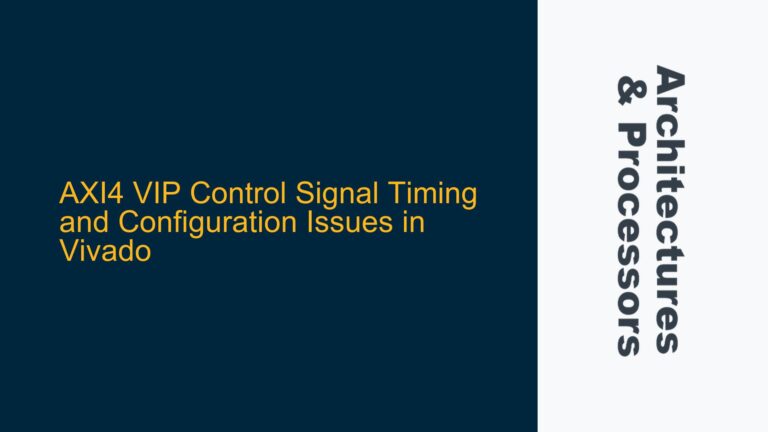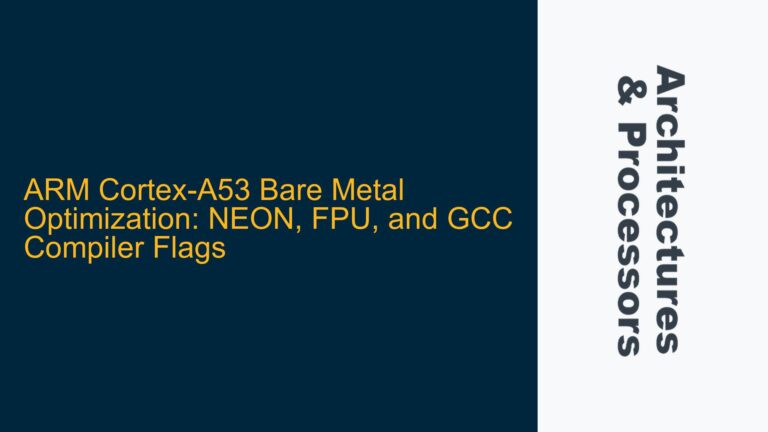AMBA APB Wait States: Impact on Read/Write Transactions and Peripheral Timing
The Advanced Peripheral Bus (APB) is a key component of the ARM Advanced Microcontroller Bus Architecture (AMBA) protocol suite, designed for low-power, low-complexity peripheral communication. One of the critical features introduced in AMBA 3 APB is the PREADY signal, which enables the insertion of wait states during read and write transactions. This feature allows peripherals with varying access timings to interface seamlessly with the APB bus. Understanding the differences between transactions with and without wait states, as well as their advantages, is essential for designing efficient and reliable APB-based systems.
In a no-wait-state transaction, the APB protocol operates in a fixed two-cycle manner. During the first cycle, known as the setup phase, the address, write data, and control signals (such as PWRITE, PSEL, and PENABLE) are asserted. In the second cycle, the access phase, the peripheral performs the requested read or write operation. This fixed timing is suitable for simple peripherals that can complete their operations within a single clock cycle.
However, for more complex peripherals that require additional time to process read or write requests, the PREADY signal is used to extend the access phase. When PREADY is deasserted, the bus enters a wait state, effectively pausing the transaction until the peripheral is ready to complete the operation. This flexibility allows APB to support a wider range of peripheral designs, from simple GPIOs to more complex interfaces like UARTs or SPI controllers.
The advantages of using wait states include the ability to interface with slower peripherals, accommodate variable access times, and simplify timing closure in complex designs. However, the use of wait states also introduces additional complexity in both the design and verification of the APB interface. Careful consideration must be given to the timing requirements of the peripheral, the impact on system performance, and the potential for deadlock or livelock conditions.
Peripheral Timing Requirements and PREADY Signal Integration
The decision to use wait states in an APB design is primarily driven by the timing requirements of the peripheral. Simple peripherals, such as GPIOs or basic timers, can typically complete their operations within the fixed two-cycle timing of a no-wait-state transaction. These peripherals do not require the PREADY signal and can operate efficiently with minimal overhead.
For more complex peripherals, such as those involving memory-mapped registers, FIFOs, or interfaces to external devices, the access time may vary depending on the operation being performed. For example, a UART peripheral may require additional time to process a write to its transmit FIFO or to retrieve data from its receive FIFO. In such cases, the PREADY signal is used to extend the access phase until the operation is complete.
Integrating the PREADY signal into the peripheral design requires careful consideration of the timing constraints and the interaction between the peripheral and the APB bus. The peripheral must assert PREADY at the appropriate time to indicate that it is ready to complete the transaction. Failure to do so can result in incorrect behavior, such as data corruption or incomplete transactions.
Additionally, the use of wait states can impact the overall system performance, particularly in designs with multiple peripherals sharing the same APB bus. Each wait state introduces additional latency, which can affect the responsiveness of the system. Therefore, it is important to balance the need for wait states with the performance requirements of the system.
Optimizing APB Transactions: Strategies for Handling Wait States and Ensuring Timing Compliance
To optimize APB transactions and ensure timing compliance, designers must adopt a systematic approach to handling wait states. This involves understanding the timing requirements of the peripheral, implementing the PREADY signal correctly, and verifying the design to ensure that it meets the specified timing constraints.
One key strategy is to minimize the use of wait states wherever possible. This can be achieved by optimizing the peripheral design to reduce access times or by using pipelining techniques to overlap operations. For example, a peripheral with a FIFO interface can use pipelining to process incoming data while simultaneously handling outgoing data, reducing the need for wait states.
Another important consideration is the timing of the PREADY signal. The peripheral must assert PREADY at the correct time to ensure that the transaction completes successfully. This requires careful timing analysis and simulation to verify that the peripheral meets the setup and hold time requirements of the APB bus.
In addition to timing considerations, designers must also address potential issues related to bus contention and deadlock. For example, if multiple peripherals on the same APB bus require wait states, the bus may become congested, leading to increased latency and reduced performance. To mitigate this, designers can implement priority-based arbitration or use separate APB buses for high-priority peripherals.
Verification is a critical aspect of ensuring the correct operation of an APB design with wait states. This involves creating comprehensive testbenches that cover all possible timing scenarios, including edge cases where the peripheral takes the maximum number of wait states to complete a transaction. The use of formal verification techniques can also help to identify potential timing violations and ensure that the design meets the specified requirements.
In conclusion, the use of wait states in AMBA APB designs provides the flexibility needed to interface with a wide range of peripherals, but it also introduces additional complexity in terms of timing and verification. By understanding the differences between transactions with and without wait states, optimizing the peripheral design, and implementing robust verification strategies, designers can ensure that their APB-based systems operate efficiently and reliably.






